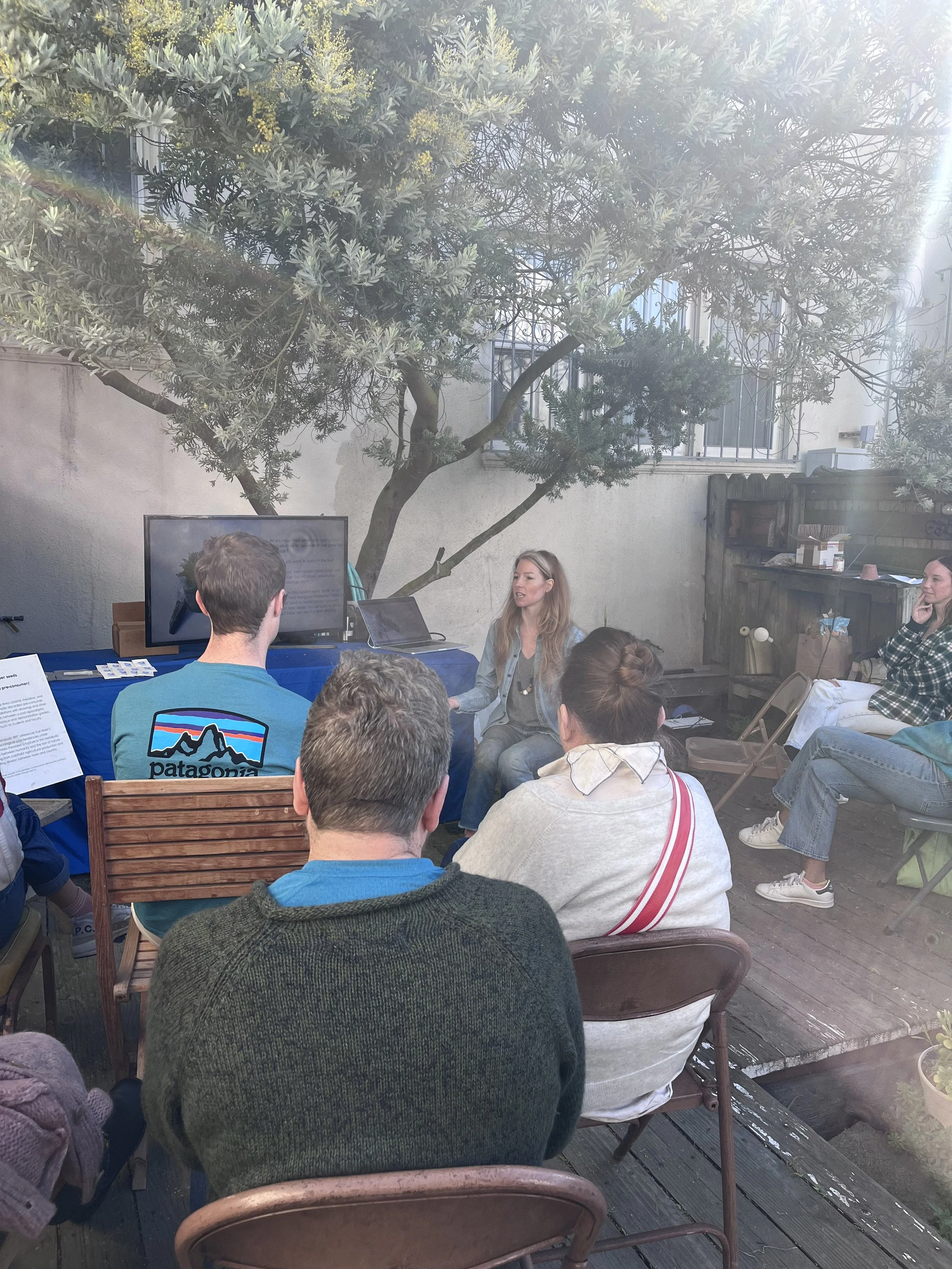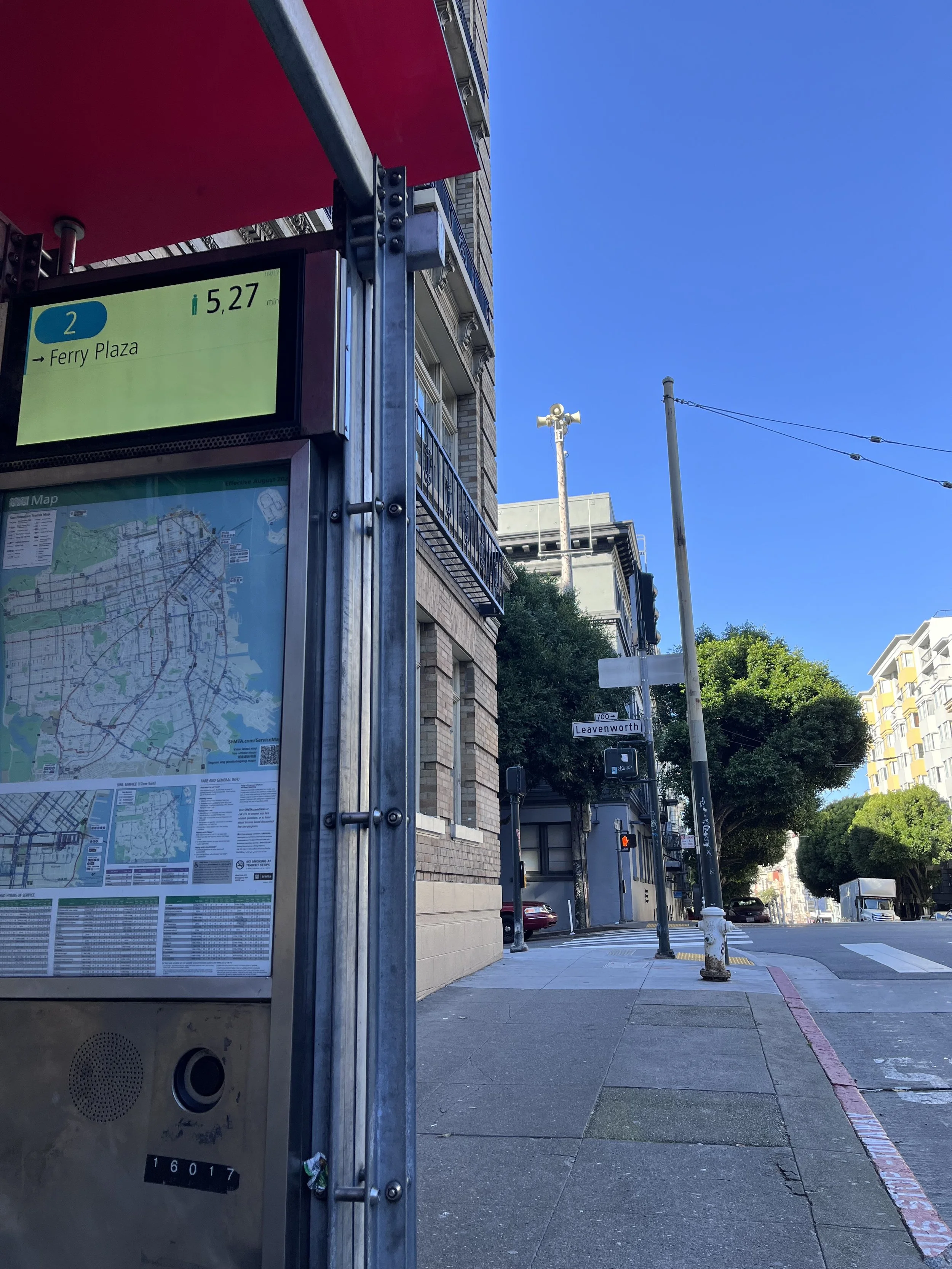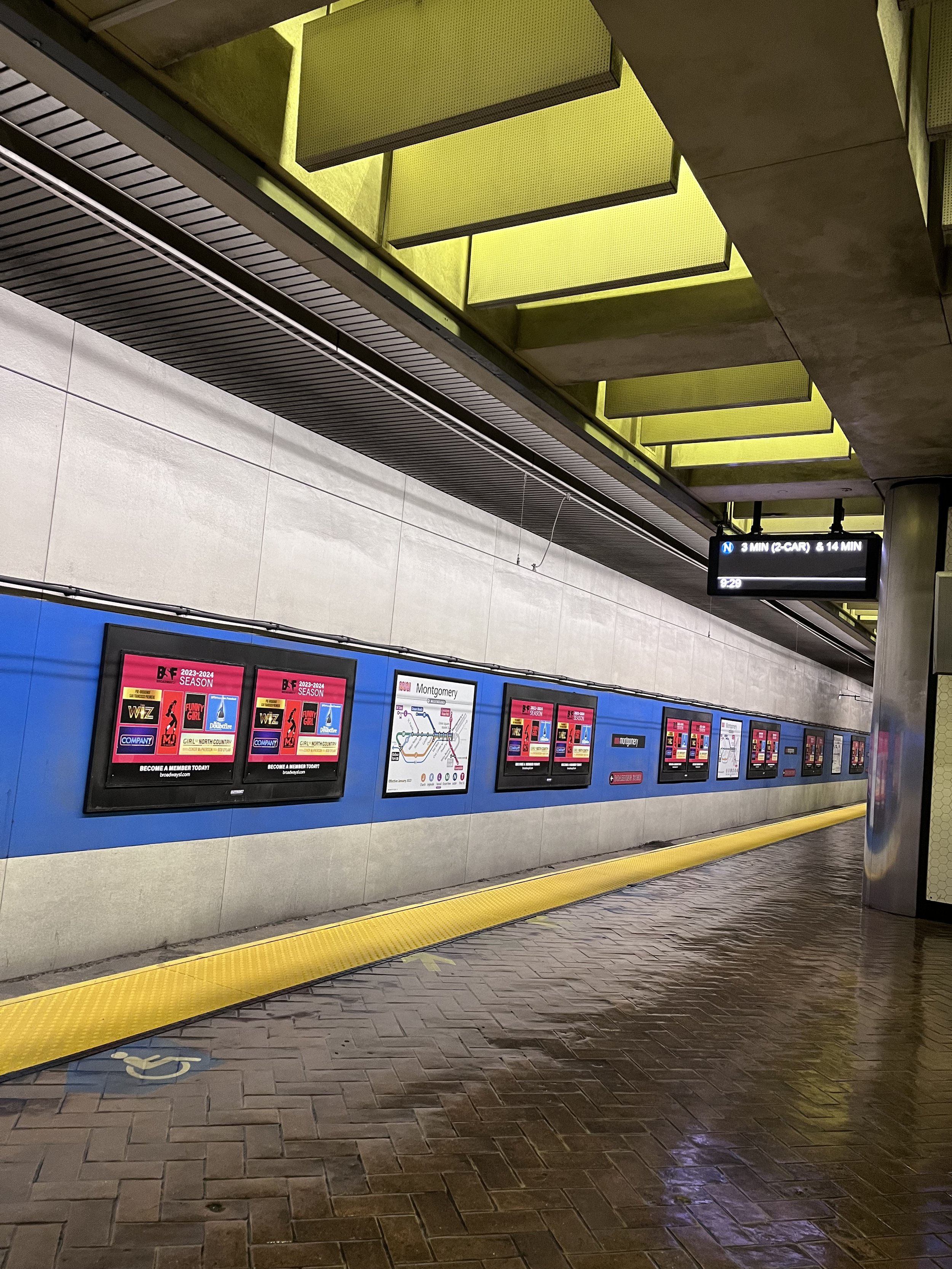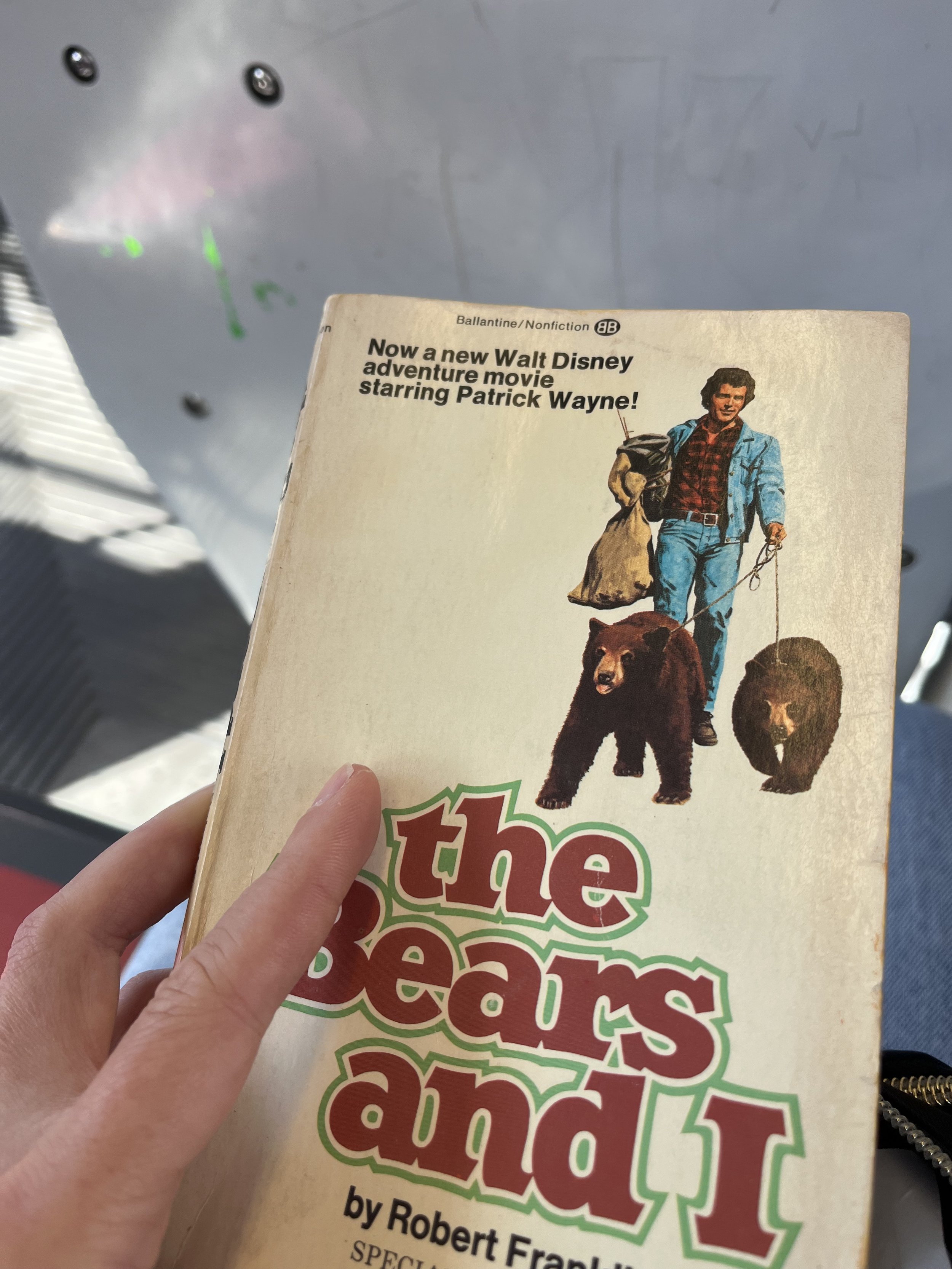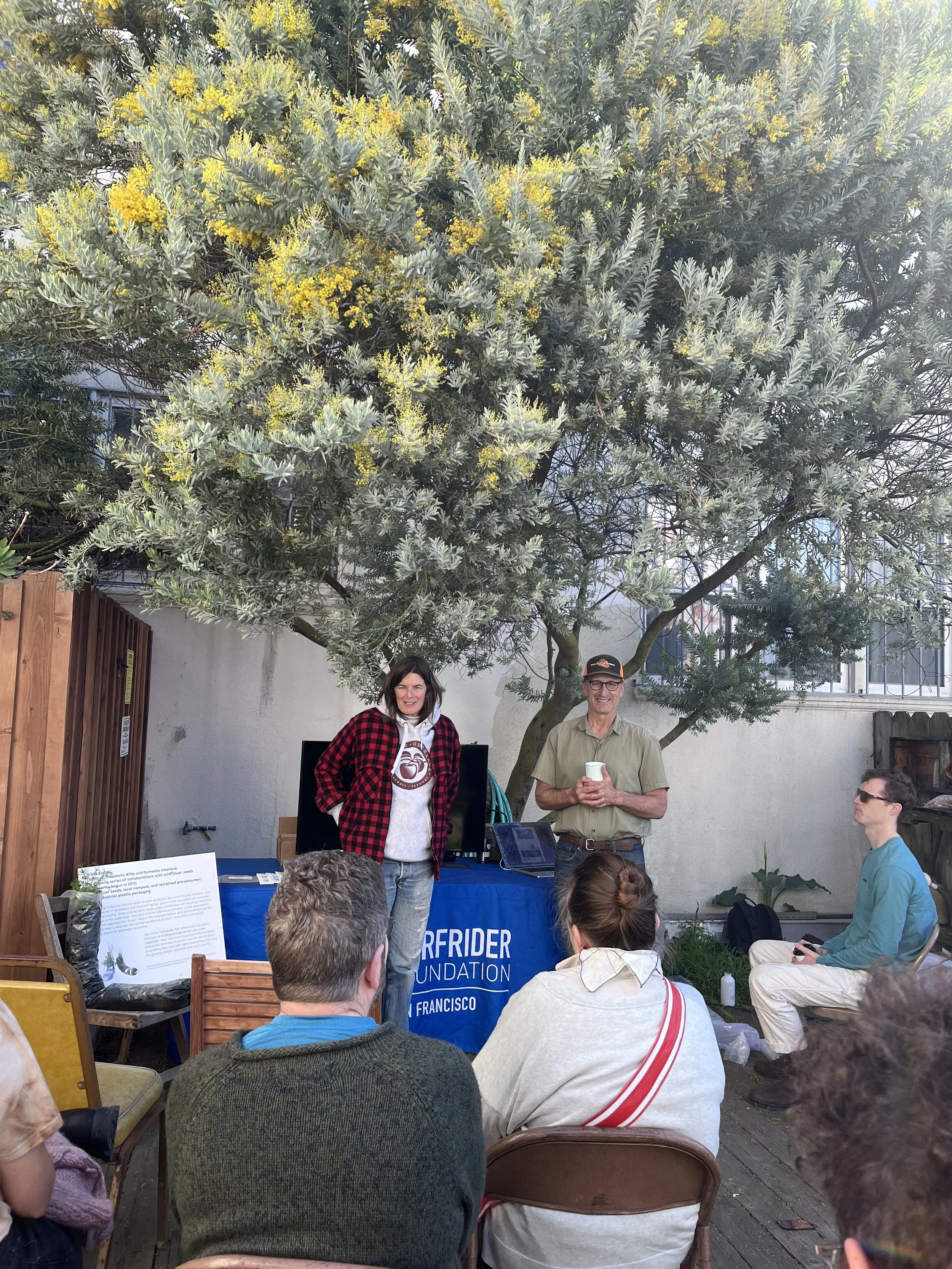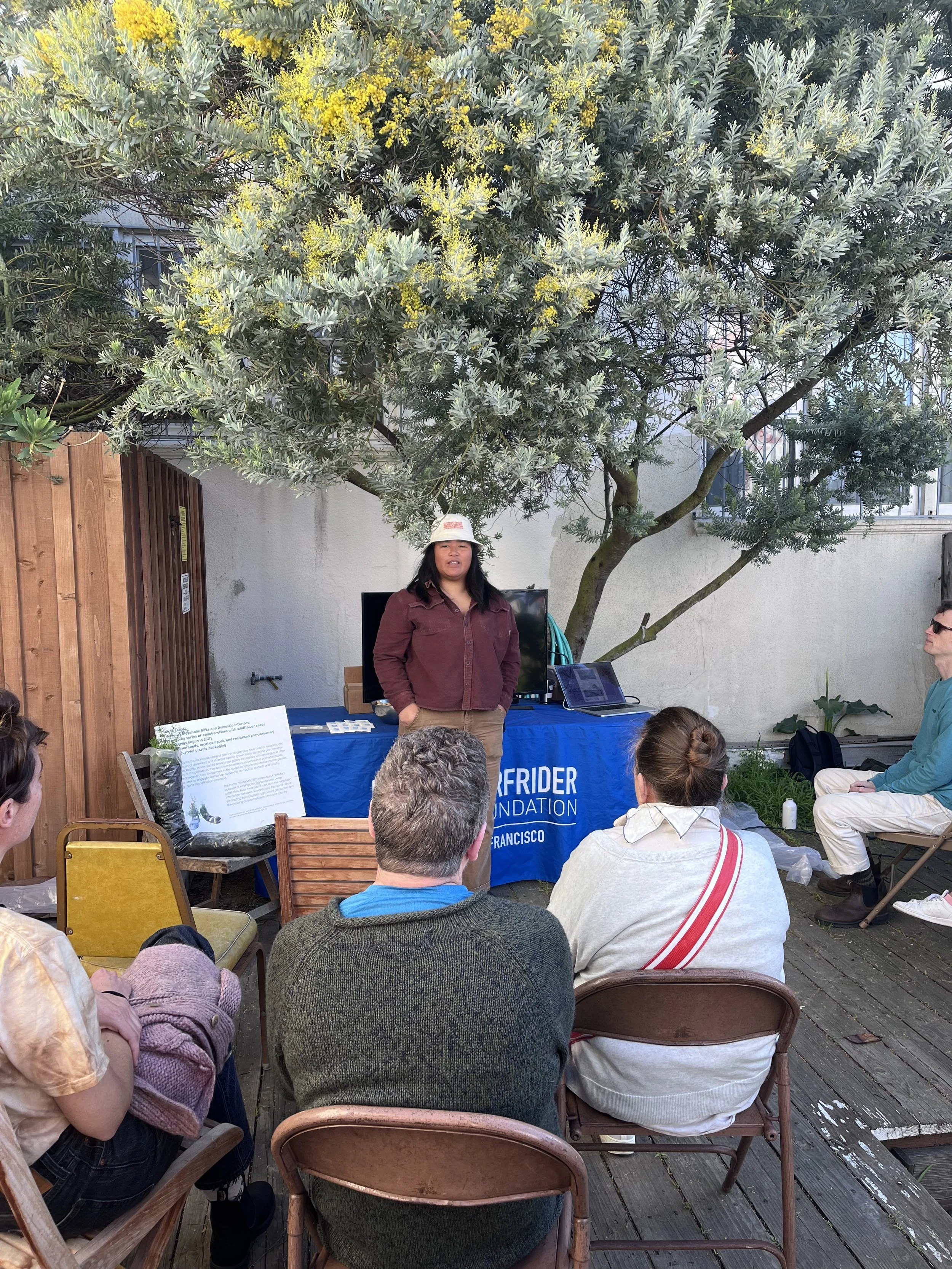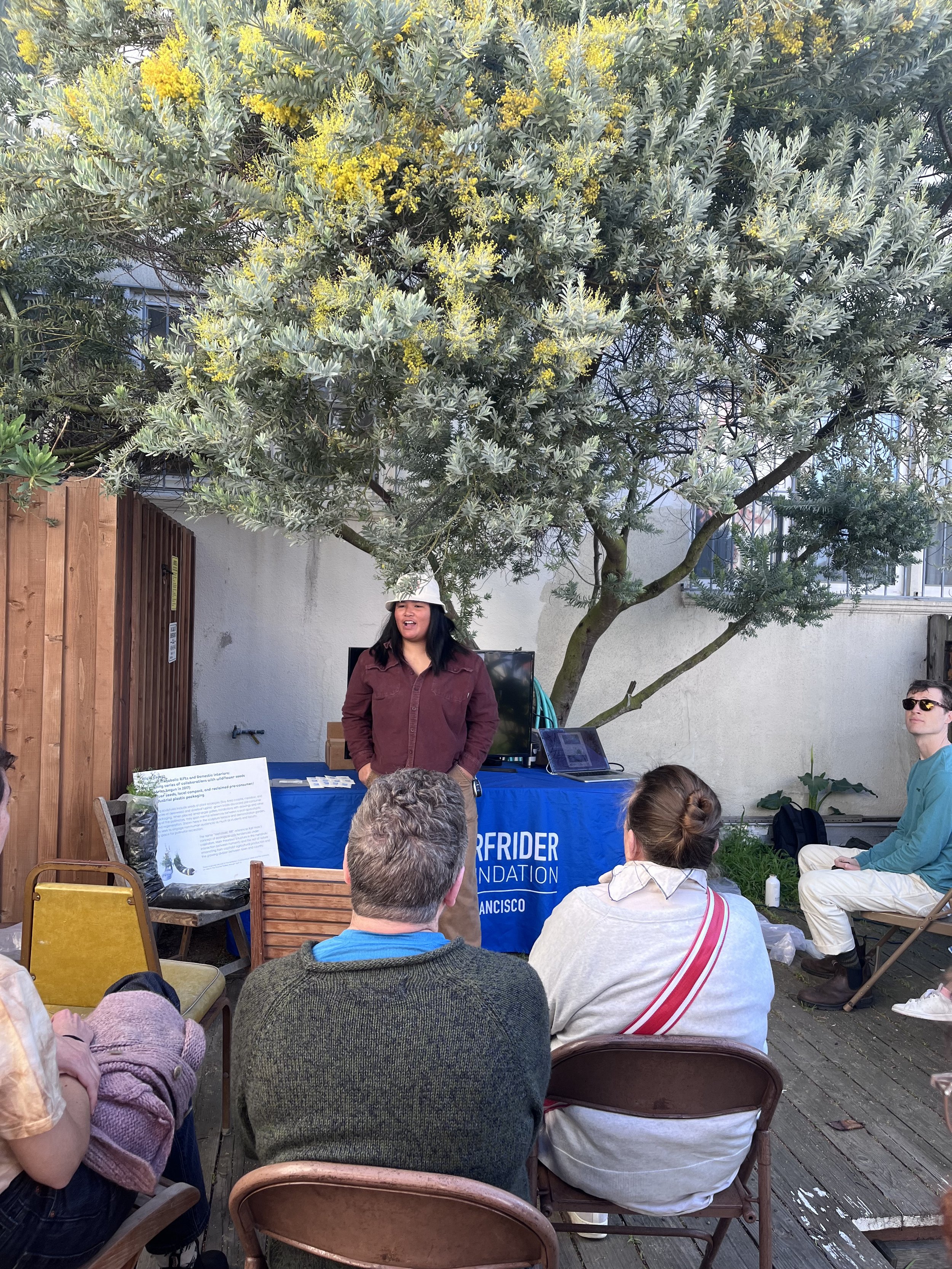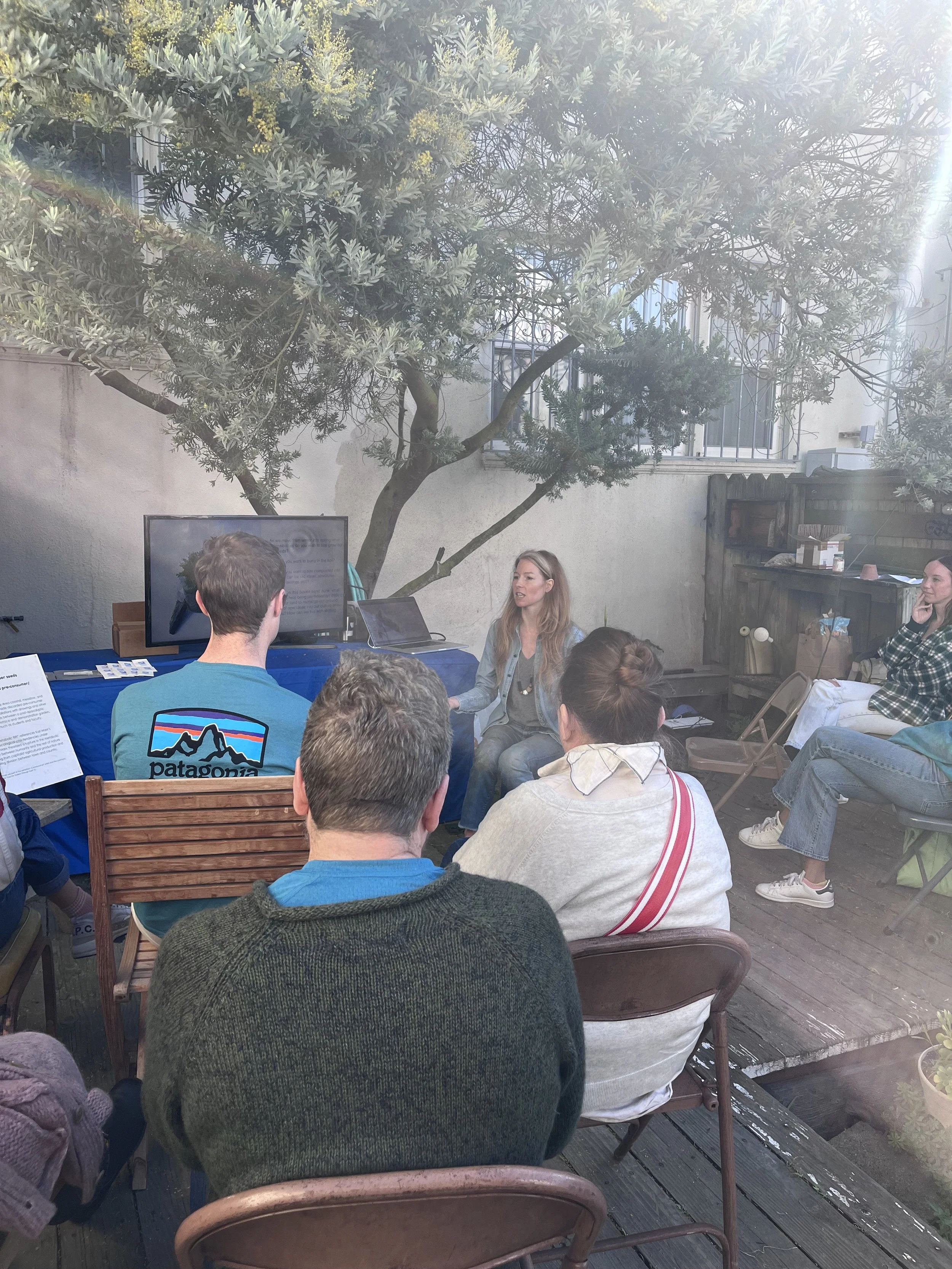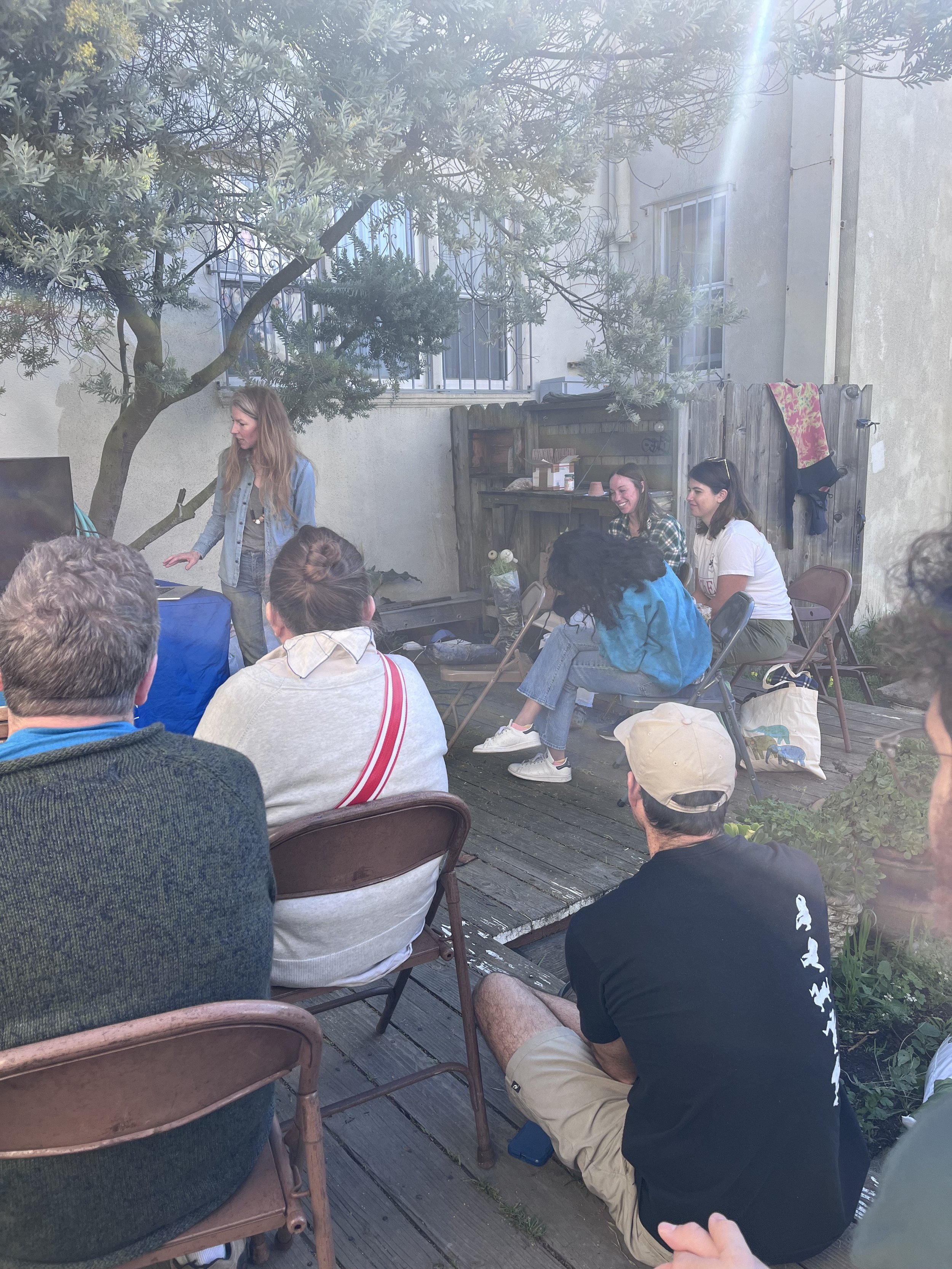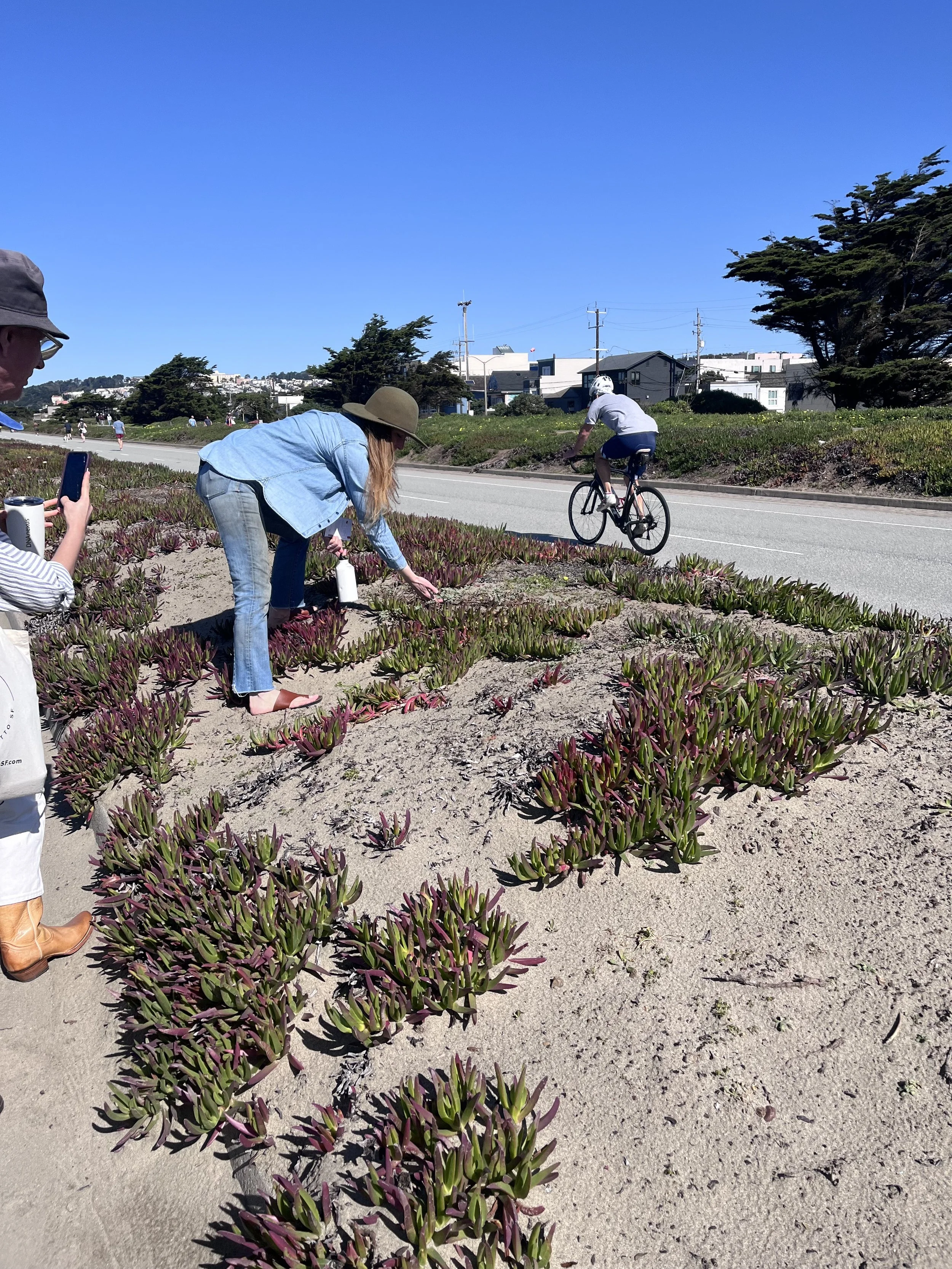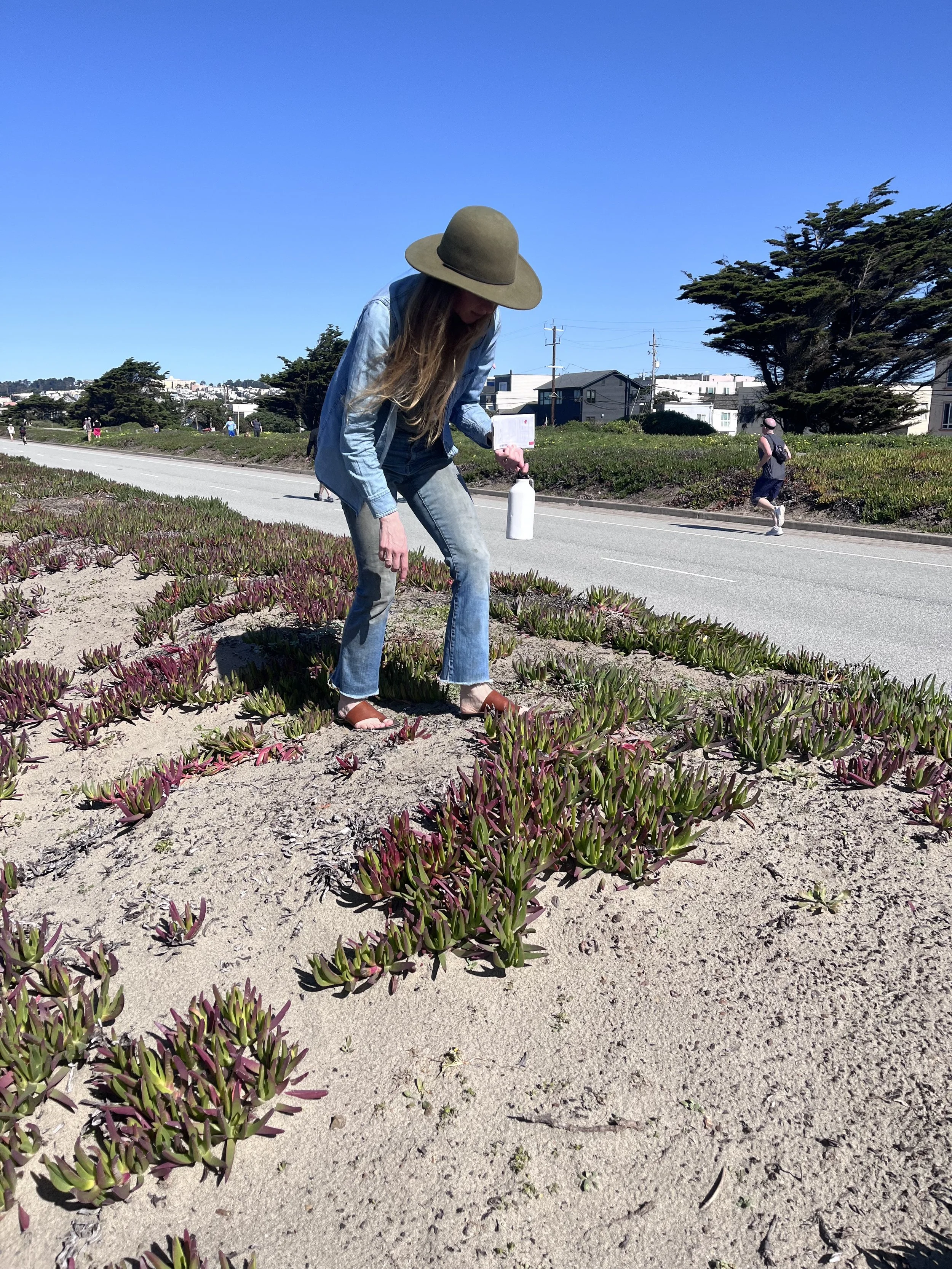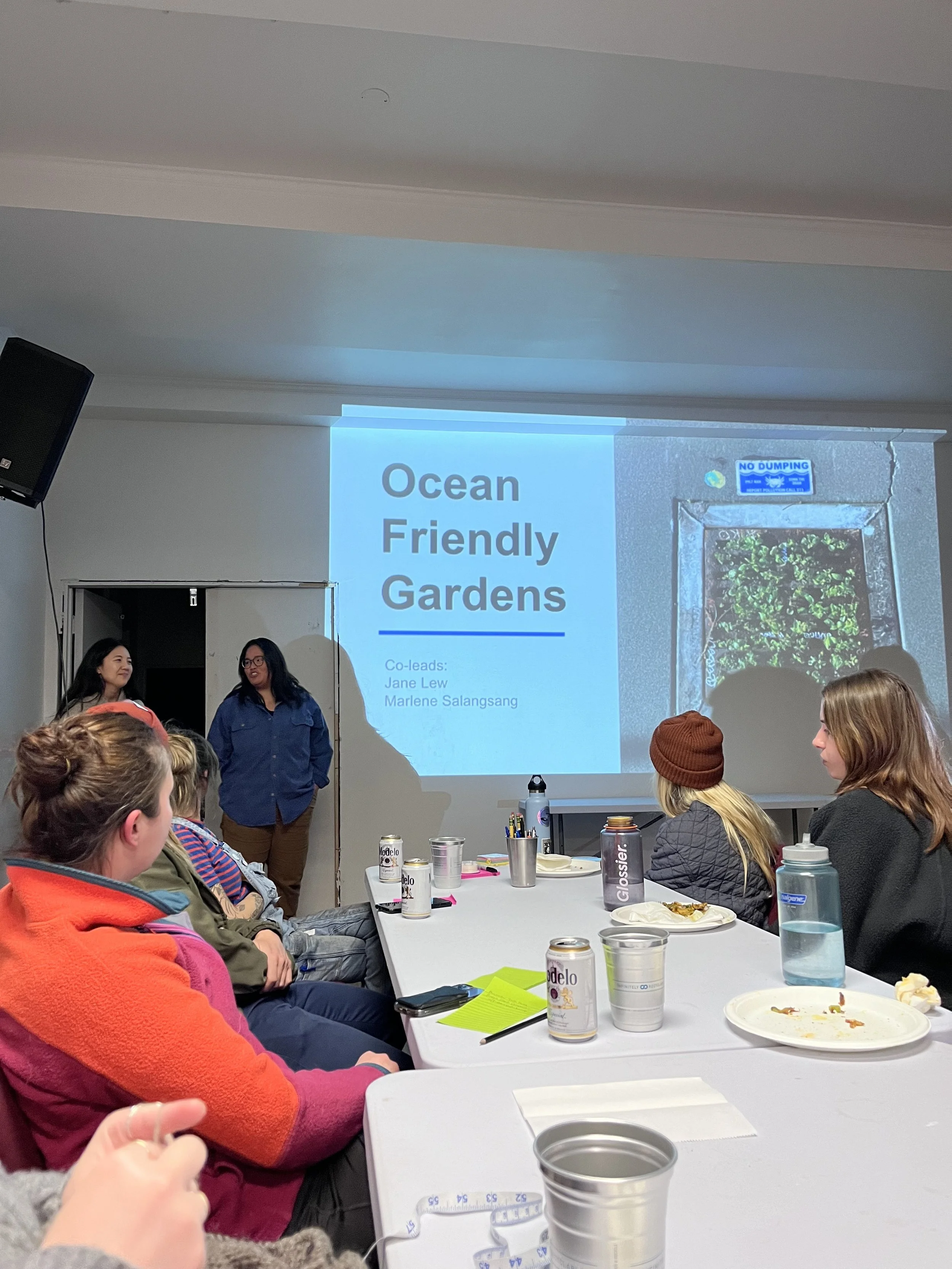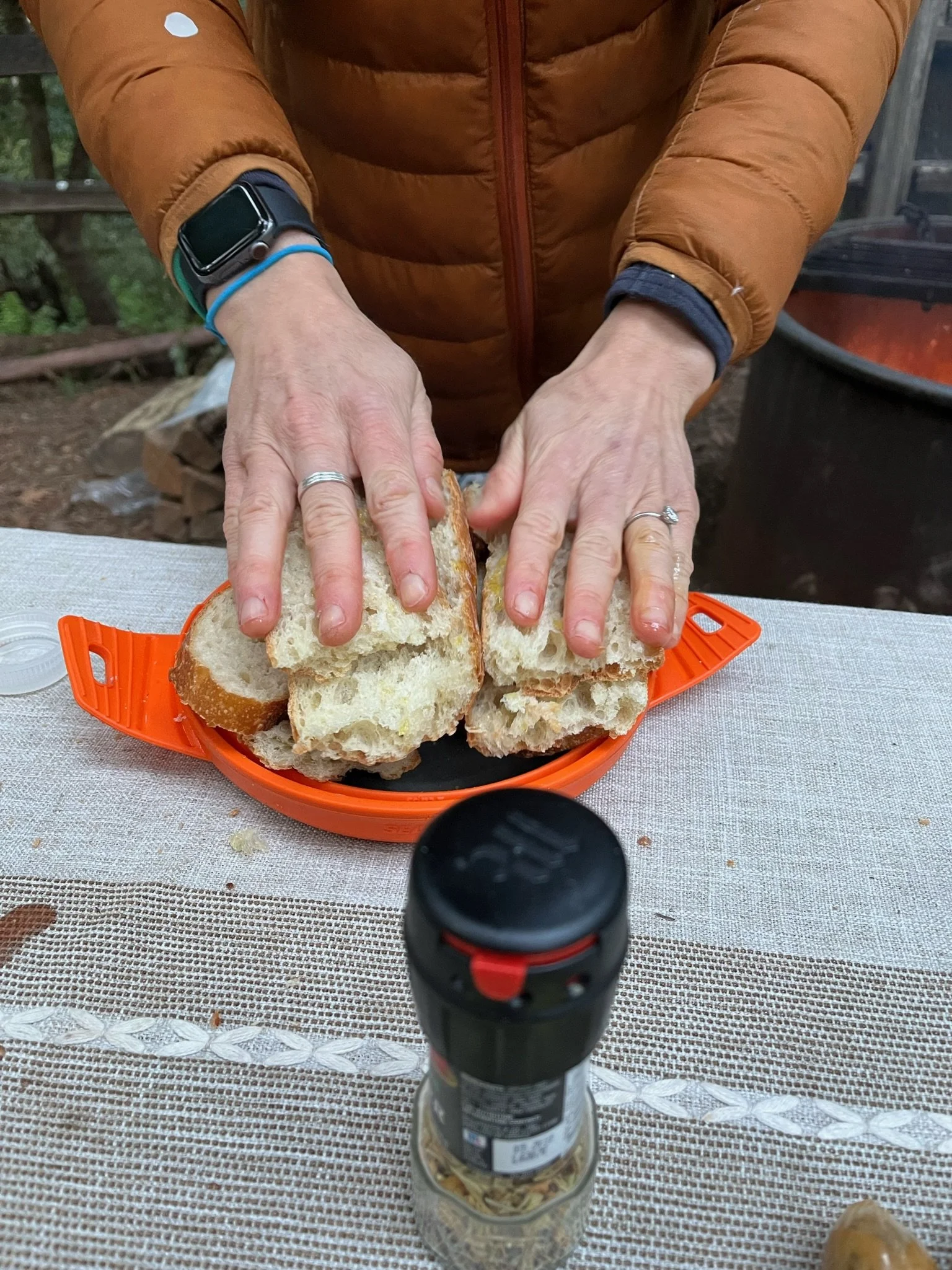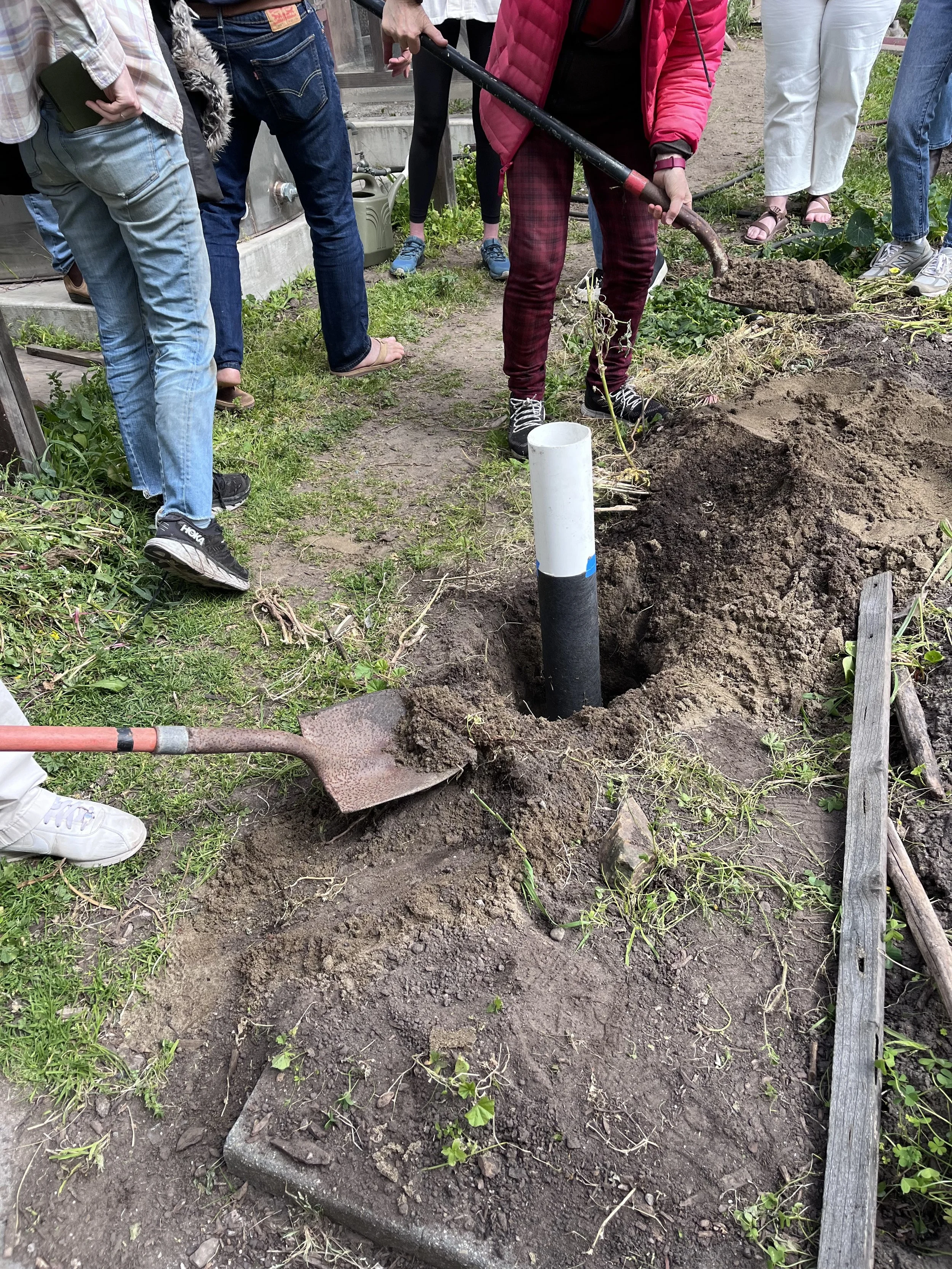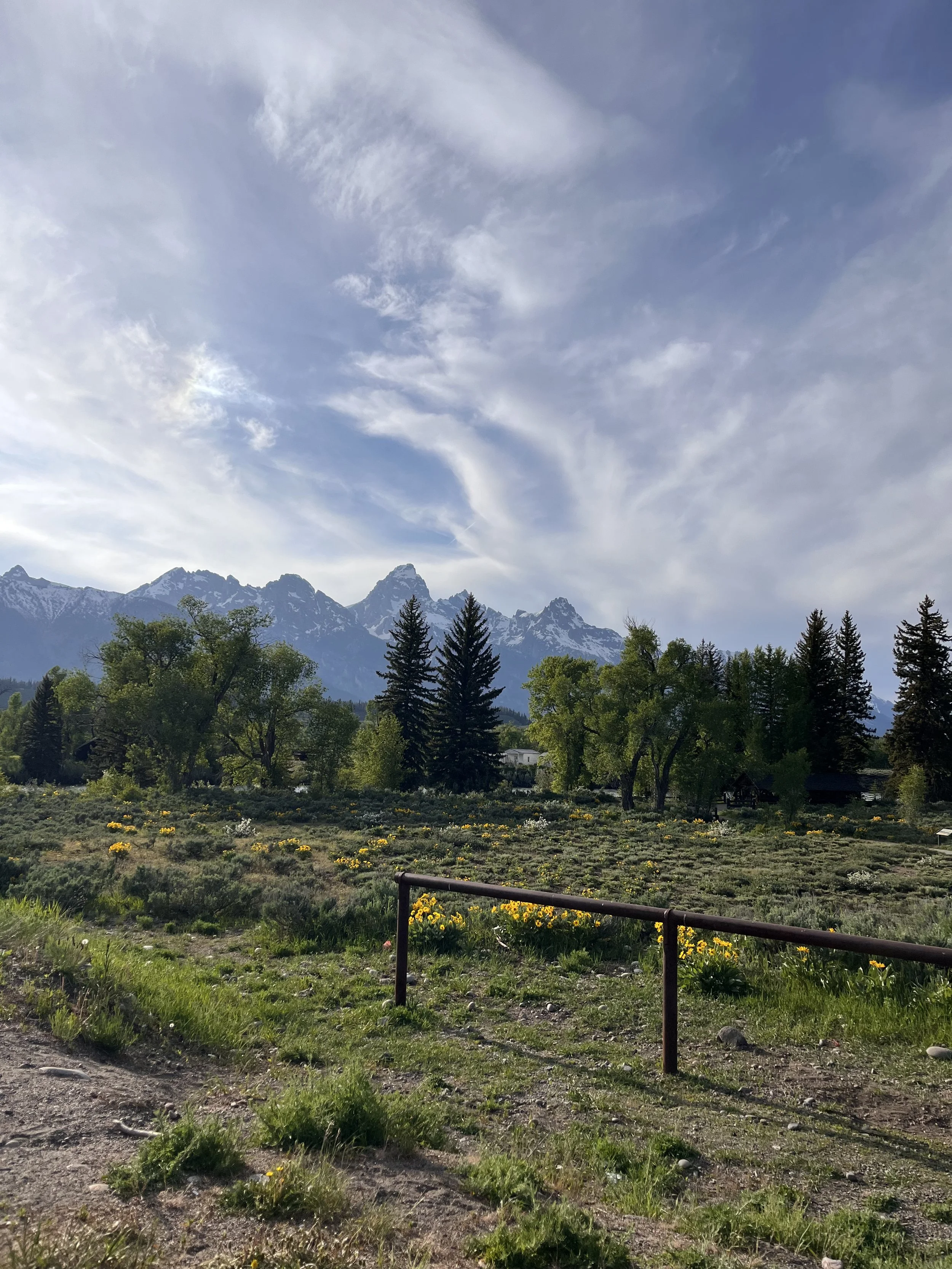Event Recap: Native Planting Art Workshop in the Far Out West Community Garden
I rushed to catch the 27 Muni bus to the Montgomery station where I could transferred onto the N underground. Google Maps predicted I’d be about ten minutes late to the event, but I refused to call a car. Partly because I was trying to use the more sustainable public transportation option and partly because I’ve been trying to be more frugal.
For the next fifty minutes, I enjoyed my new book about a man and some bear cubs. I’d decided to read it after engaging with a snippet that had intrigued me in an old Reader’s Digest that my mom had brought with her on our trip to Japan a few weeks prior.
Just under an hour later, the N Muni bus dropped me off right in front of the Far Out West Community Garden where the event I was attending was taking place.
About the Event: An Art Workshop Involving Native Ecologies & Planting
I’d seen the event posted on the @surfridersf Instagram. It was listed as a seed-sowing art workshop that would be a celebration of Ocean Beach’s native dune ecologies.
If that doesn’t sound like the perfect activity for my first weekend back in SF after Japan and Tahoe, I don’t know what does. It also gave me the chance to catch up with my friends who had convinced me to volunteer with them at Alemany Farms by convincing them to join me at this event.
Surprisingly for the Outer Sunset, the sun was shining gloriously when I arrived, and I was thankful that I’d worn sunscreen. I’m not sure the last time I’ve seen such a gorgeous day (especially out in the foggy Sunset district), and standing there, surrounded by the garden’s greenery made me feel like I was whole again. This weather would be part of the conversation as we delved into the art we’d be creating.
The event kicked off with a quick introduction from the founders of the small but lush Far Out West Community Garden where we stood. This community garden has a mission to not only foster the local community but also increase awareness about the local, regional, and global environment.
Fun facts I learned:
Ocean Beach is a part of the Golden Gate National Recreation area, which is home to more endangered species than Yosemite.
San Francisco’s rain water runoff and sewage are collected in a single system, so when heavy rain fall occurs, the system can be overwhelmed, leading to discharges in what are called “outfall” points.
The Far Out West Community Garden was awarded a grant to create a rainwater catchment system. Built on the outside of an old church, rainwater from the church roof is caught and stored in a 1,850 gallon tank. This not only allows them to water during times of drought (more common in the state than the rainy days we’d been having) but can also help with the overflow mentioned above.
After the brief introduction from the Far Out West Community Garden, the Surfrider team stood up to introduce themselves and give a brief overview of the work they’ve been doing for their Ocean Friendly Gardens initiative.
As one of their first events, the morning’s art workshop was a way to engage the community in understanding local ecologies, thinking about how plants have a direct relationship to the ocean, and sparking thoughtful conversations around both. Not to mention, it was a fun way to intertwine a few different communities across ocean enthusiasts, green thumb gardeners, and artists—each with a passion for the earth and living a more sustainable life.
About the art:
I have to admit that I hadn’t done too much research into what the event would be like before signing up. Again, everything that had been listed in the description of the Instagram post seemed solid to me.
To be honest, I thought it was going to be way more about gardening and far less about art. That said, as we gathered to listen to the third host, local artist Alicia Escott, I was pleasantly engaged by her story and the journey that led her to the art we would be creating with her that day.
We would be creating plant ‘beings’. I’m not sure I know how to describe them in any other way. They were bags filled with soil and when left on their own, their slouched forms looked almost humanoid.
They were both a commentary on interactions with plants and how we can form relationships with them as well as a reflection on consumerism, plastic in which products had been shipped, transformed into homes for seedlings and food for local pollinators.
Though I felt the pang in my chest that always comes with the identity crisis I face when working against consumerism while promoting it in my nine-to-five, I was appreciative of the artist’s recognition and respect for the dichotomy that is life. She’s worked in retail herself, so I felt the guilt slip away just slightly. We were also using soil from a store which was, itself, housed in plastic.
We also talked about the invasive wildflowers that we were surrounded by and how:
Though we want to support the native plants that were/are being overtaken, we have to recognize the strength of invasive species—and understand that there may come a time when we need their survival skills when no other plants can survive
We listened to the journey that led her to this art: the block she’d felt, her fascination with seeds that she discovered during the pandemic, how her procrastination led her to discover a now-extinct butterfly (Xerces) that lived in this area and lost its habitat when the dunes were paved over. It allowed us to feel more connected to the art that we were creating.
It was not just art, but food for pollinators and the animals and plants that live because of those pollinators.
Pudge the plant baby:
Partnering with my two friends, we took one of the plastic shipping bags that Alicia had brought and began to fill it with soil. I dug my hands into the soft brown soil and then filled our own little bag.
We wanted it to be pudgy, we decided, so loosened some tape around the middle which had been keeping it in the form of a perfect tube. Then we filled up the little belly and all the way to the top.
We named our plant being “Pudge.”
Once the bag was filled, we were gifted local seeds. Each seed type was one we’d learned about in the brief artist presentation that we’d listened to.
We raked them softly into the top of Pudge’s soil and then moved him over to a little section below the pergola in the garden where we sprinkled water to soak it just a few inches down. With rain on its way in the next week or so, we didn’t want to over-water them.
Planting on Great Highway:
We ended the day with a walk to Great Highway to add more native seeds along the median at the center of the slow street.
Alicia pointed out where she’d already planted some evening primrose (Camissonia Cheiranthifolia), dune lupine (Lupinus chamissonis) and silver lupine (Lupinus albifrons).
After a short walk in the sun, sewing seeds in the dunes, it was time to leave for lunch. The sun shone down and as I walked back up from the beach in the Outer Sunset, I felt hopeful.

